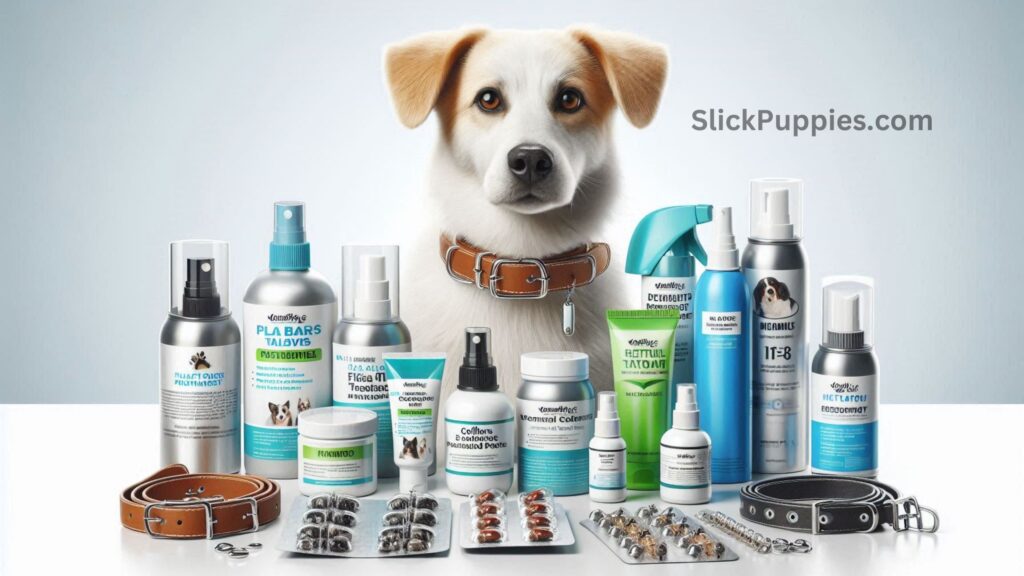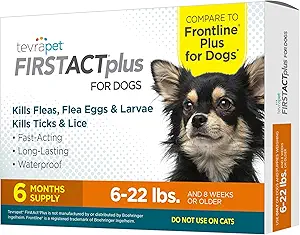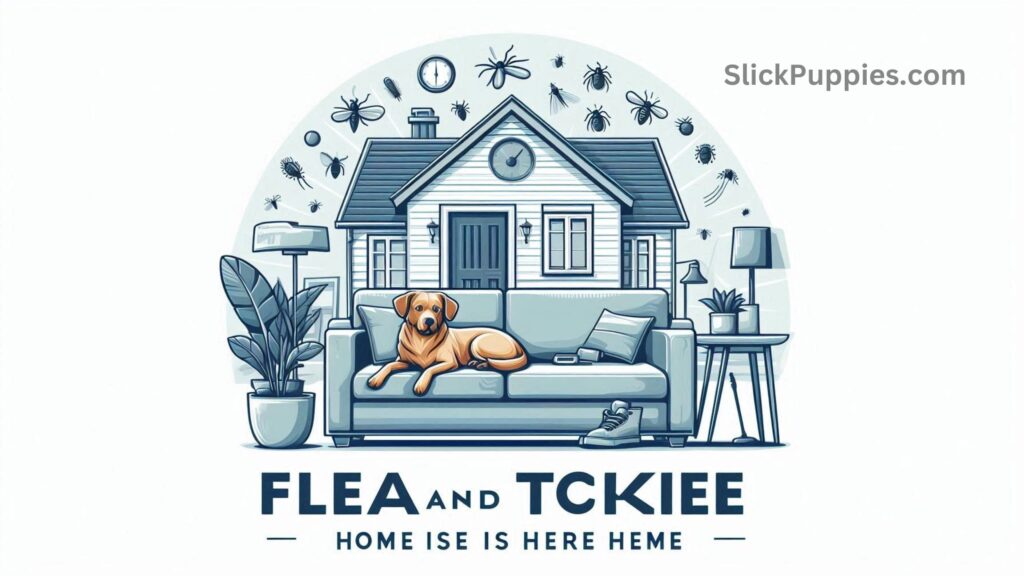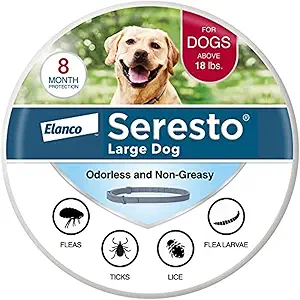Spring and summer are the perfect time to enjoy the great outdoors with your dog, but these seasons also happen to be prime flea and tick time in many parts of the country. With changing climates, these peak seasons are lasting even longer. No matter how cautious you are, it’s hard to completely avoid fleas and ticks if your dog spends any time outside. The best way to protect your dog is by using a combination of effective products and sticking to a regular prevention routine. Your dog—and your household—will definitely appreciate it!
Effective Flea and Tick Prevention for Dogs
The flea and tick preventatives available for dogs today are safer and more effective than ever before. Over the years, we’ve seen a huge increase in options for keeping your dog flea- and tick-free. But it’s still really important to think about your dog’s safety when choosing a product. To figure out the best flea and tick prevention plan, it’s a good idea to talk to your vet. They’ll consider your dog’s age, health, breed, and where you live or vacation. Your vet will also take into account if you have other pets, dogs that love to swim, or young kids at home.

Here are some options for flea and tick preventatives:
- Flea and tick pills or chewables
- Topical treatments
- Flea and tick collars
- Flea and tick shampoos
- Flea and tick sprays
- Flea and tick wipes
- Home treatments
- Yard treatments
Choosing the Best Flea and Tick Prevention for Dogs
The American Veterinary Medical Association (AVMA) reminds pet owners that parasite protection isn’t a “one-size-fits-all” deal. Some products aren’t safe for very young puppies or senior dogs, and certain dog breeds might have reactions to certain ingredients. To find the safest and best flea and tick prevention for your dog, the AVMA suggests asking your vet the following questions:

- What parasites does this product protect against?
- How often should I use or apply it?
- How long will it take to work?
- If I see a flea or tick, does that mean it’s not working?
- What should I do if my pet has a reaction to the product?
- Do I need to use more than one product?
- How should I use multiple products on my dog?
Your vet is the best person to help you choose what’s right for your dog. You can always ask questions about your flea and tick prevention routine or ask about new products that may be available. By picking the right options, you’ll keep your pet safe from bites that can cause illness or other issues.

FirstAct Plus Flea Treatment for Dogs
FirstAct Plus Flea Treatment for Dogs effectively prevents and treats fleas, ticks, and lice, providing long-lasting protection and promoting a healthy, comfortable coat.
Also Read: How to Care for a Small Dog Breed in Winter?
Tick Bite Prevention to Prevent Disease
Tick bites can spread diseases that cause a range of symptoms and, in some cases, can even be fatal for your dog. Ticks carry diseases like Lyme disease, Rocky Mountain spotted fever, anaplasmosis, ehrlichiosis, and babesiosis.

The Centers for Disease Control and Prevention (CDC) warns that most tick-borne diseases don’t have vaccines available for dogs. These diseases can be hard to spot because their symptoms are often vague and can easily be mistaken for something else. Treating tick-borne illnesses can also be lengthy and expensive.
Dr. Jerry Klein, Chief Veterinarian at the AKC, suggests doing daily tick checks on your dog during tick season and always using a tick preventative treatment. It only takes about 12 hours for ticks to transmit anaplasma and 24 to 36 hours to spread Lyme disease. Finding and removing ticks quickly can help lower the risk of these serious diseases.
Flea Bite Prevention to Prevent Itching and Illness
Flea bites in dogs can cause a lot of discomfort. You might notice your dog scratching, biting, or licking more than usual. Other signs include redness, flaky skin, scabs, hot spots, and hair loss. If your dog is allergic to fleas, even just one bite can cause a major flare-up, leading to intense itching and irritation.
Fleas are also the most common cause of tapeworms in dogs. When a dog is bitten by a flea, they often chew at the spot, and in the process, might swallow the flea. Fleas carry tapeworm larvae, and when your dog swallows one, the larvae can grow into adult tapeworms in their intestines. In severe cases, fleas can also cause anemia in dogs due to blood loss.
Flea and Tick Prevention for Your Household
Fleas and ticks don’t just affect dogs—they can also cause problems for people. That’s another great reason to stay on top of flea and tick prevention for your dog, to keep your home, other pets, and family safe from an infestation.

We all know fleas and ticks can be found in your yard, but these pests can hitch a ride on your dog and end up living and breeding in your carpets and furniture. While regular vacuuming helps, it won’t always get rid of fleas, ticks, or their eggs. If these pests have moved into your home, you might need to use special flea and tick products to get rid of them and prevent reinfestation on your dog or other pets.
Here are some options for treating flea and tick problems in your home:
- Indoor flea and tick sprays
- Home and carpet sprays
- Holistic flea and tick sprays
- Flea and insect traps
- Flea and tick carpet powder
- Outdoor flea and tick sprays
Before using any product, make sure to read the label carefully and follow the instructions.

Seresto Large Dog Vet
Seresto Large Dog Vet Collar provides continuous, long-lasting protection against fleas and ticks for large dogs, offering up to 8 months of pest control.
Also Read: What is the Best Puppy Shampoo for Sensitive Skin?
Flea and Tick Protection for Multi-Pet Households
It’s really important to follow the instructions and warnings for any flea and tick products, not just for your dog, but also for other pets in your home like cats, birds, fish, reptiles, or rodents. Some products, especially those with essential oils or certain insecticides, may not be safe for cats or birds. Always check with your vet to make sure the flea and tick treatments you’re using are safe for all your pets.

If you have multiple pets, keeping fleas and ticks under control is even more crucial. Dr. Klein says, “Fleas and ticks are also carriers of many diseases, and they can spread these diseases between animals. If you have more than one pet, they’re all at risk.”
This means that in a household with more than one dog (or dog and cat), you need to treat every pet, not just the one that got the flea or tick. If you spot a flea on one pet, chances are the rest of your dogs or cats (even indoor-only ones) might have them too. If you only treat one pet and skip the others, the fleas and ticks can easily jump from one pet to another. Consistent and thorough treatment for all your pets is the best way to get the problem under control.


